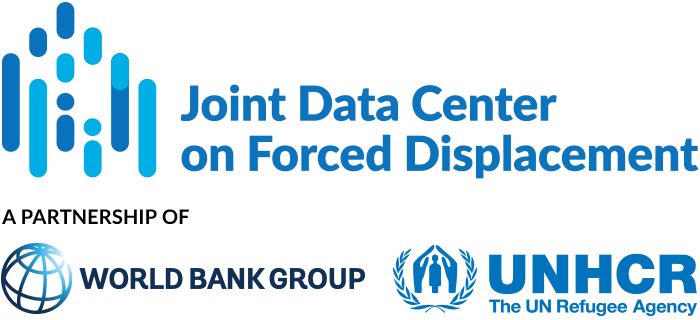This paper examines the self-reliance of refugees in Uganda and estimates the savings in assistance resulting from their economic inclusion. Uganda, which hosts over 1.5 million refugees as of 2023, is recognized for its progressive policies that integrate refugees into national systems and promote their self-reliance through economic inclusion. Despite these progressive policies, poverty among refugees (46 percent in 2018) was almost three times higher than among host communities (18 percent). Severe food insecurity affects about 70 percent of refugee households, while it impacts 50 percent of host households. And, despite access to land and income-generating opportunities, 54 percent of refugees remain dependent on aid.
The analysis is based on data from the Uganda Refugee and Host Communities Household Survey 2018 (RHCS), which is representative of the refugee and host population in the West Nile and Southwest regions, and the city of Kampala.
The authors estimate the costs associated with three scenarios: (1) a hypothetical “no economic opportunities” scenario assuming refugees do not earn any income, measured as the full value of the poverty line (using the daily international poverty line of US$2.15 in 2017 PPP transformed into 2022 prices); (2) a “current” scenario that accounts for the income earned by refugees, measured as the difference between the poverty line and pre-assistance consumption, representing the aid needed to lift the consumption of refugees to the poverty line; and (3) a hypothetical “full economic inclusion” scenario, measured by the current poverty gap of Ugandan hosts as a proxy for basic needs costs, assuming and average refugee has similar human capital, access to productive assets, and economic opportunities as an average Ugandan. The difference between (1) and (2) can be viewed as an economic inclusion dividend made possible by the prevailing refugee policies.
Additionally, the authors conduct a regression analysis to identify factors associated with the poverty gap (specifically, the consumption to poverty line ratio), controlling for variables such as region of residence, household size, age, sex, and literacy of the household head.
Main results:
- On average, 47 percent of refugees’ total consumption is provided by aid. This share is significantly higher for the poorest refugees in the bottom quintile (61 percent) compared to the richest refugees in the top quintile (29 percent).
- Under the “no economic opportunities” scenario, the overall cost per refugee would be approximately US$343. For 1.5 million refugees, the hypothetical annual cost of basic humanitarian assistance would total US$515 million.
- The current level of economic integration in Uganda reduces these costs by 43 percent to US$193 per capita, or US$290 million for 1.5 million refugees. Costs of basic needs under the “current” scenario vary by region: US$10 in Kampala, US$140 in Southwest, and US$231 in West Nile, reflecting regional poverty levels. Annual savings in assistance between the no income and current scenarios amount to US$150 per refugee per year, totaling US$225 million.
- Instead of receiving the full US$290 million in aid, refugees receive only half, US$145 million. The post-assistance poverty gap for refugees is 28 percent, indicating an average annual shortfall in per capita consumption of US$97, or US$145 million per year for all refugees.
- Costs under the hypothetical “full economic inclusion” scenario are much lower, at US$39 per refugee per year.
- Descriptive statistics suggest that better economic and social integration, and access to productive assets like land, are associated with lower costs for meeting refugees’ basic needs. Some groups of refugees have much lower needs for basic assistance than the average “current” scenario cost of US$193 including refugees who own land (US$149, 23 percent lower), refugees with more than 0.05 hectare per capita (US$113, 41 percent lower), refugees with a working head of household (US$167, 14 percent lower), refugees who have been in Uganda for three or more years (US$123, 37 percent lower), and refugees with children having Ugandan friends (US$176, 9 percent lower).
- Regression analysis identifies several household characteristics significantly correlated with the consumption to poverty line ratio. An employed household head, ownership of at least 0.05 hectare of land per household member, owning at least one plot, having refugee children with Ugandan friends, staying in Uganda three or more years, ownership of large cattle, the ability to borrow, and higher dependency ratios are associated with a lower poverty gap. The gender of the head of household does not affect the size of the poverty gap.
- A comparison between refugees and Ugandan households shows that refugees lag in characteristics that narrow the poverty gap. Refugees are less likely to have access to land, and if they do, they often have user rights rather than ownership. Most Ugandans have at least 0.05 hectare per capita, while most refugees have less. Refugee heads of household are less likely to work and be literate compared to Ugandans. And, refugees have higher shares of children and elderly in their households compared to Ugandans.
At present US$290 million of assistance is needed to lift all refugees in Uganda up to the international poverty line. Refugees do not receive this much assistance, with the authors estimating a shortfall of US$145 million. This underfunding leads to poverty and low consumption levels among refugees. The authors recommend increasing development-focused investments to enhance refugees’ income-earning capacity, benefiting both refugees and the international community by reducing the need for humanitarian aid. Uganda’s policy allowing refugees to work and access land has saved the international community an estimated US$225 million annually in aid. The authors suggest sharing this US$225 million ‘inclusion dividend’ with the host country.


